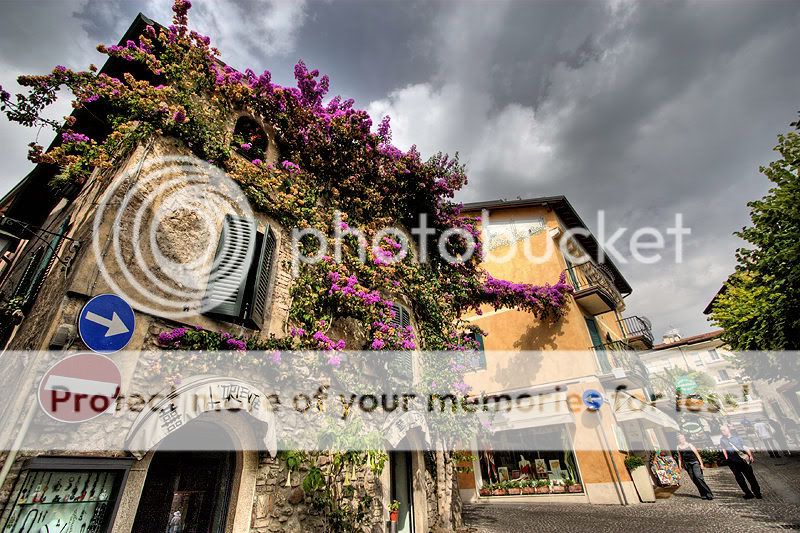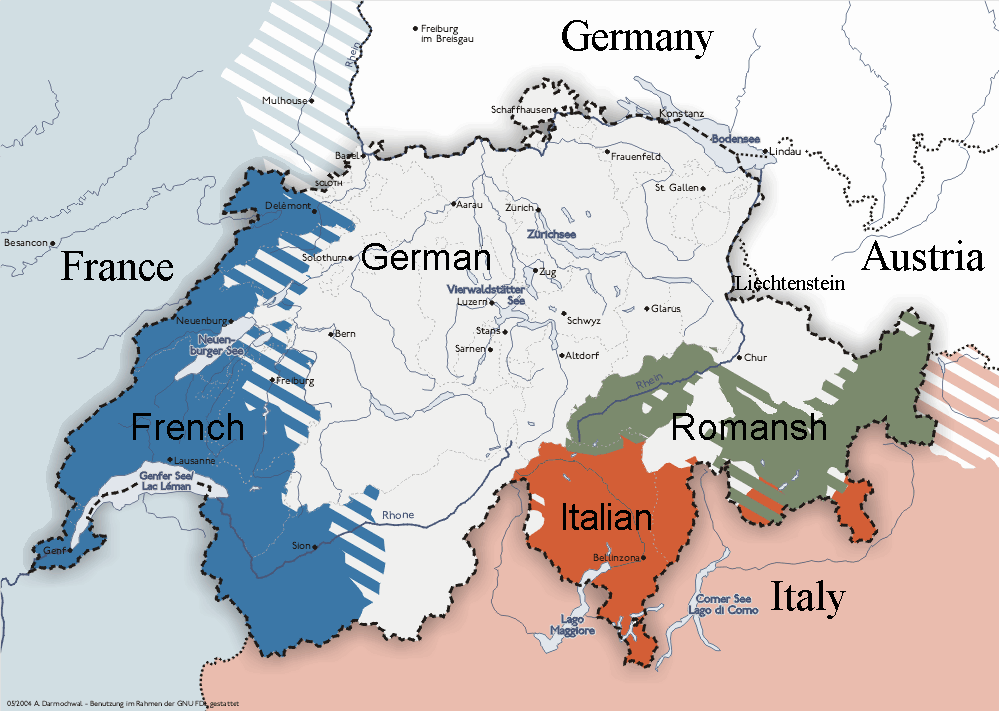Insübria, Land of Waters
Bogoljubskij
Insubria, Land of Waters
Music: "Insubria" by Ticìnn Canntàl (Google Play • iTunes • eMusic • AmazonMP3)
I thought that I had posted this song once before on this blog. It's a song in tribute to "Insubria," which is Western Lombardy. This is where the west Lombard dialect was spoken (along with Ticino, Switzerland), and still is in some places. The name comes from the Gaulish tribe called the Insubri, which inhabited the region in pre-Roman times.
**************************************************
The DeConcinis
Dennis Webster DeConcini (born May 8, 1937) is a former Democratic U.S. Senator from Arizona. The son of former Arizona Supreme Court Judge Evo Anton DeConcini, he represented Arizona in the United States Senate from 1977 until 1995.
Background information
DeConcini was born in Tucson, Arizona, the son of Ora (née Webster) and Evo Anton DeConcini. His father was Judge on the Arizona State Superior Court for 10 years, then served as the Arizona Attorney General for one two-year term from 1948 to 1949 before being appointed to the Arizona State Supreme Court where he served as a Judge for four years from 1949–1953. DeConcini received his Bachelor's degree from the University of Arizona in 1959 and his LLD from the University of Arizona in 1963. He then worked as a lawyer for the Arizona Governor's staff from 1965 to 1967. He founded the law firm of DeConcini, McDonald, Yetwin & Lacy (where he is still a partner) with offices in Tucson, Phoenix and Washington, D.C.
He is a member of the advisory council of the Victims of Communism Memorial Foundation.
Evo Anton DeConcini (March 25, 1901 – 1986) was Attorney General of Arizona, and a Justice of the Arizona Supreme Court from 1949 to 1953.
Born in Iron Mountain, Michigan, DeConcini and his family soon moved to Wisconsin. He began studies at the University of Wisconsin in 1920, but his father's death in an automobile accident in February 1921 forced DeConcini to move to Arizona.
Around 1928, DeConcini developed the Government Heights subdivision just south of the VA Hospital (now known as the Southern Arizona VA Health Care System) in Tucson, Arizona. He named the roads in the subdivision President and Lincoln streets and Washington, District and Columbia streets. In honor of President Lincoln and the U.S. capital Washington D.C. Washington Street was later renamed Palmdale Street.
After running various family businesses for a decade, he received a J.D. from the University of Arizona in 1932 and married Ora Webster, of Thatcher.
He was attorney general of Arizona from 1948 to 1949, and then served on the Arizona Supreme Court until January 13, 1953, when he was succeeded by Dudley W. Windes. Prominent attorney Daniel Cracchiolo served as law clerk to Arizona Supreme Court Justice Evo DeConcini in 1952 [1].
He was the father of longtime Arizona Senator Dennis DeConcini and Dino DeConcini a Federal DEA official.
**************************************************
"Not Padania, but Lombardy, Venetia, etc... Different Lands"
by David from Bergamo
I wanted to mention briefly a piece written several years ago on one of the PAL forums regarding how the former nation of "Lombardia"--as well as numerous other former nations--should be a nation in of itself, rather than a northern "Padania."
**************************************************
Independence Front Lombardy
The Independence Front Lombardy (Fronte Indipendentista Lombardia, FIL) was a padanist and separatist political party active in Lombardy.
Founded in 2006 by Max Ferrari and other splinters from Lega Lombarda–Lega Nord, FIL joined Lombardia Autonoma in 2008, but soon regained its autonomy as a markedly-separatist party. Ferrari chose to stay in Lombardia Autonoma, which had its name changed into "Lega Padana Lombardia", and finally returned in the League in 2010.
The party eventually re-emerged under the leadership of Piergiorgio Seveso in 2011, when it ran a candidate in the Varese municipal election, but gained a dismal 0.2% of the vote. Since 2012 the website is no more active.
Leadership
National secretary: Max Ferrari (2006–2008), Piergiorgio Seveso (2009–2011)
References
http://www.laprovinciadivarese.it/stories/Cronaca/206143_il_fronte_spiazza_tutti_e_si_schiera_con_oprandi/
http://comunali.interno.it/comunali/amm110515/C0861160.htm
http://www.frontelombardia.net/
I remember a few years ago they were on many forums, try to push for this. It was brought to my attention that there was a much better chance for an independent Lombardy and other northern states, than there was for a Padanian nation. Of course, the requirement would be that they would be under the umbrella of the EU/Bilderberg "European state." It just never got any traction. They had that great Lombard party symbol of the two-headed white eagle with the red cross on white background. The ancient nation flexing it's muscles once again, if even for only a short time.
Lega Lombarda and Lega Padana Lombardia--both Padanist and "Lombardist"--are now active and independent.
**************************************************
Palazzo del Te
Palazzo del Te or Palazzo Te is a palace in the suburbs of Mantua, Italy. It is a fine example of the mannerist style of architecture, the acknowledged masterpiece of Giulio Romano. The official name, and by far the most common name in Italian, is Palazzo Te, but this may be a relatively recent usage; Vasari calls it the "Palazzo del T" (pronounced as "Te"), and English-speaking writers, especially art historians, continue to call it the Palazzo del Te. In Italian this now suggests use for tea-drinking, which may account for the divergence in usage.
**************************************************
Clan Wallace Insubria Festival
madmak007's channel
Clan Wallace Insubria Festival marcallo Italy.
The Matt Maginn set
Ever since the movie 'Braveheart' twenty years ago, there has been that comparison with the British Isles' "northern Gaelic-Celt vs. English military power" dynamic.... with that of the "northern Gaulish-Celt vs. Roman military power" dynamic within the Italian peninsula. In both cases, the empirical establishment eventually won and absorbed the conquered region.
**************************************************
 |
| The arms of the House of Visconti |
The wars in Lombardy were a series of conflicts between the Republic of Venice and the Duchy of Milan and their respective allies, fought in four campaigns in a struggle for hegemony in Northern Italy that ravaged the economy of Lombardy and weakened the power of Venice. They lasted from 1423 until the signing of the Treaty of Lodi in 1454. During their course, the political structure of Italy was transformed: out of a competitive congeries of communes and city-states emerged the five major Italian territorial powers that would make up the map of Italy for the remainder of the 15th century and the beginning of the Italian Wars at the turn of the 16th century, viz. Venice, Milan, Florence, the Papal States and Naples. Important cultural centers of Tuscany and Northern Italy—Siena, Pisa, Urbino, Mantua, Ferrara—became politically marginalized.
The wars, which were both a result and cause of Venetian involvement in the power politics of mainland Italy, found Venetian territory extended to the banks of the Adda and involved the rest of Italy in shifting alliances but only minor skirmishing. The shifting counterweight in the balance was the allegiance of Florence, at first allied with Venice against encroachments by Visconti Milan, then switching to ally with Francesco Sforza against the increasing territorial threat of Venice. The Peace of Lodi, concluded in 1454, brought forty years of comparative peace to Northern Italy, as Venetian conflicts focussed elsewhere.
After the Treaty of Lodi, there was a balance of power resulting in a period of stability lasting for 40 years. During this time, there was a mutual pledge of non-aggression between the five Italian powers, sometimes known as the Italic League. Even there was frequent tension between Milan and Naples, the peace held remarkably well until the outbreak of the Italian Wars in 1494, as Milan called upon the king of France to press his claim on the kingdom of Naples.
The rivalry between the Venetians and the Milanese nations was not always a forgone conclusion as to which side the aristocratic classes of eastern Lombardy would side with. Eventually the Brescians, and later the Bergamasques, would switch loyalty to the Venetian side. Of course these aristocratic milieus, such as the Brescian Council--although powerful in their own right--were still relegated to a lessor position than that of the Venetians, Milanese, Genoese, or Florentines. In the sixteenth century, both Brescia and Bergamo would become part of the Venetian Republic.
**************************************************
Cisco's Mike Volpi - Born in Milan
Michaelangelo "Mike" Volpi (born 13 December 1966) is best known for his leadership of Cisco Systems business development efforts as Chief Strategy Officer during the company’s prominent growth era, acquiring over 70 companies in less than five years. He then became SVP of the Routing and Service Provider Technology Group, where he managed over 5,000 engineers; in early 2007 this was an $11 billion business for Cisco. He was considered the right-hand man and successor of CEO John Chambers. In 2007 he left Cisco and became EIR at Sequoia Capital. A few months later, he was appointed CEO of Joost. In 2009 he became General Partner at Index Ventures.
**************************************************
The Lombard origins of "Italian Graubünden"
The Italian Graubünden or Italian Grigioni (Italian: Grigionitaliano or Grigioni italiano; German: Italienischbünden; Romansh: Grischun talian) is the region of the Canton of Graubünden, Switzerland where Italian and Lombard are spoken.
Located in the southernmost part of the canton, it includes the districts of Moesa (to the west) and Bernina (to the east), and the municipalities of Bivio in the Albula district and Bregaglia in the Maloggia district. It has a population of about 15,000 inhabitants, of which over 85% speak Italian or Lombard.
Geography
The three regions that make up the Italian Graubünden are separated by mountains, isolated from the rest of the canton as well as from each other. Because of their remoteness and the lack of economic possibilities, emigration has traditionally been a serious issue, and even today more than half of the people born in the Italian Graubünden live and work outside of the region in the predominately Italian-speaking region of Ticino.
This region is a remnant of when the Grey Leagues political alliance of the canton still occupied the Valtellina (Sondrio) against it's will. The Valtellinese didn't have any "league" or any stake in the struggle for Swiss nationalism. Later the Spanish invaded for a time. Only with the help of the Napoleonic French powers did the region gain some autonomy in 1797, within the old Cisalpine Republic, under the French empire. However, the Grey Leagues were able to maintain control over the three little isolated valleys of this "Italian Graubünden."
To add to the confusion, the native Romansh language is spoken throughout Graubünden, and even in a few parts of the Valtellina as well. To start with, this people/language is not Romanian, although it is a Romance language. It's a leftover of a culture which was more widespread, but has declined from the encroaching German and Italian languages. In a perfect world, the Lombard and Romansh languages are the proper tongues of this canton and the Valtellina. The famous actor Jim Caviezel is partly of Romansh descent; "Caviezel" being a surname of Romansh origin. There could have been some pre-Roman Germans there, who later assumed a Romance (Roman derived) language.
**************************************************
 |
| Alberto Rabagliati |
Paolo Maldini - Soccer star; born in Milan; played 25 seasons for A.C. Milan club; longtime captain for Italian national team; son of longtime player and manager for A.C. Milan Cesare Maldini
Claudio Abbado - One of the most celebrated and respected conductors of the 20th century; born in Milan
Carlo Facetti - Auto racing driver; European Touring Car Champion in 1979; born in the province of Milan
Alberto Rabagliati - Singer and actor in Italy and the United States; although more known as a singer and stage actor in Italy, he was known to American audiences for his acting roles in 'The Barefoot Contessa' (1954), 'The Christmas That Almost Wasn't' (1966), 'Street Angel' (1928), 'The Montecarlo Story' (1956), 'Il vedovo' (1959), and 'La vita è bella' (1943); the movie had traditional December airings on Home Box Office (HBO) during the 1970s and early 1980s; his name brings up almost 9,000 results on YouTube; born in milan
**************************************************
Lake Garda biking trails
When observing a satellite image, such as with Google Maps, Lake Garda is the massive lake which most stands out by far as it sits majestically where the Po flat lands meet the pre-Alps between Lombardy and the Veneto. It's the Lake Tahoe of Europe, as they both sit amid beautiful unspoiled mountains. As old as time, it watched the Battle of Lake Benacus on it's banks in 268 AD--between Roman and Germanic armies--as we would watch ants moving upon a yard.
There's the surrounding mountains and it's ancient villages; as well as the coastal towns such as the beautiful Gardone Riviera.
'Scanuppia and other Bike Trails in the Lago di Garda Area' (LonelyCyclist.rtij.nl)
 |
| Sirmione, Lake Garda
Sirmione, Lake Garda
Sirmione, Lake Garda
|
**************************************************
Friday is "Frigga's Day"
In Langobardic mythology, this goddess was known as "Frea." She is the only goddess who has a day of the week named after her (along with three gods and three planetary bodies).
Frigg
In Germanic mythology, Frigg (Old Norse), Frija (Old High German), Frea (Langobardic), and Frige (Old English) is the Goddess of the Atmosphere,or the clouds. In nearly all sources she is described as the wife of the god Odin. In Old High German and Old Norse sources, she is also connected with the goddess Fulla. The English weekday name Friday (etymologically Old English "Frīge's day") bears her name.
In Norse mythology, the northernmost branch of Germanic mythology and most extensively attested, Frigg is described as a goddess associated with foreknowledge and wisdom. Frigg is the wife of the major god Odin and dwells in the wetland halls of Fensalir, is famous for her foreknowledge, is associated with the goddesses Fulla, Lofn, Hlín, and Gná, and is ambiguously associated with the Earth, otherwise personified as an apparently separate entity, Jörð (Old Norse "Earth"). The children of Frigg and Odin include the gleaming god Baldr. Due to significant thematic overlap, scholars have proposed a particular connection to the goddess Freyja.
After Christianization, mention of Frigg continued to occur in Scandinavian folklore. In modern times, Frigg has appeared in modern popular culture, has been the subject of art, and receives modern veneration in Germanic Neopaganism.
.










Freyja !
ReplyDeletehttps://en.wikipedia.org/wiki/Frigg_and_Freyja_origin_hypothesis
Delete